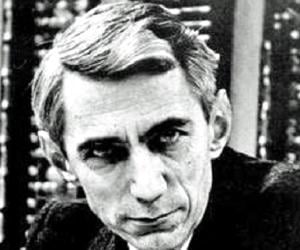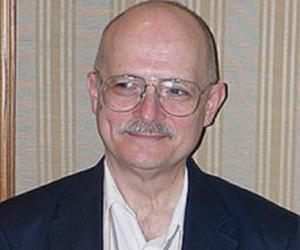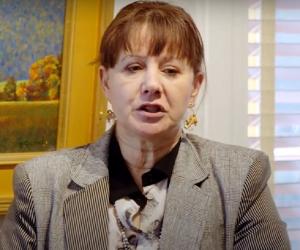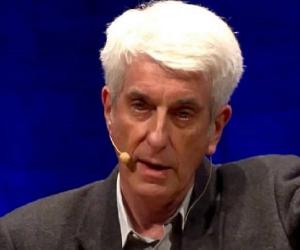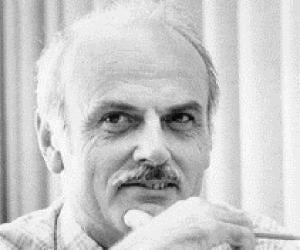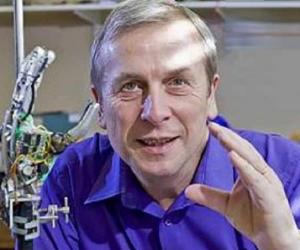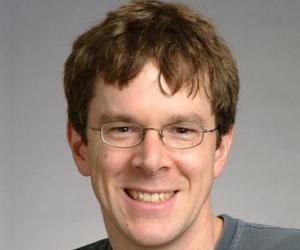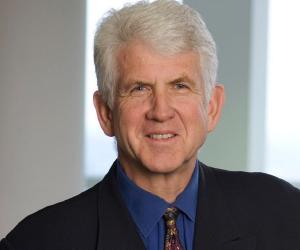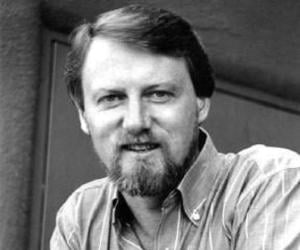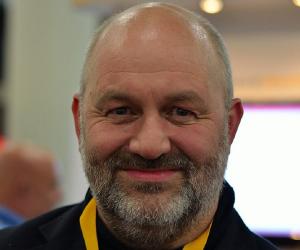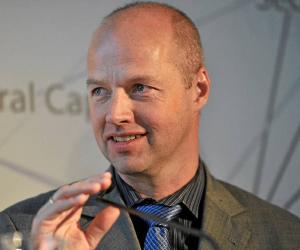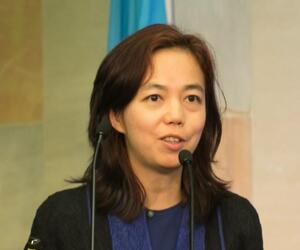Claude Elwood Shannon was an American mathematician, cryptographer, and electrical engineer, who garnered fame when he conceptualised information theory with the landmark paper, ‘Mathematical Theory of Communication’, which he put out in 1948. Because of this, he is widely considered "the father of information theory". Originally from Michigan, Shannon grew up inspired by Thomas Edison, who he later came to know was one of his relatives. He was educated at the University of Michigan from where he obtained bachelor’s degrees in mathematics and electrical engineering before enrolling in MIT to continue his education in electrical engineering. He also came up with the digital circuit design theory in 1937. During World War II, he was hired by Bell Labs to research on fire-control systems and cryptography. In 1942, he received the credits for the creation of signal-flow graphs. In 1956, he became part of the MIT faculty and worked in the Research Laboratory of Electronics (RLE). Shannon was affiliated with the institute until 1978. In later years, he was diagnosed with Alzheimer's disease and lived in a nursing home in Massachusetts. At the age of 84, Shannon passed away in February 2001.
Quick Facts
Also Known As: Claude Elwood Shannon
Died At Age: 84
Family:
Spouse/Ex-: Mary Elizabeth Moore Shannon (m. 1949)
father: Claude, Sr. (1862–1934)
mother: Mabel Wolf Shannon (1890–1945)
siblings: Catherine Shannon Kay
Born Country: United States
Mathematicians Computer Scientists
Died on: February 24, 2001
place of death: Medford, Massachusetts, United States
Cause of Death: Alzheimer
U.S. State: Michigan
More Facts
education: Massachusetts Institute Of Technology, University Of Michigan
awards: 1972 – Claude E. Shannon Award
Kyoto Prize
1966 – IEEE Medal of Honor
1985 – Kyoto Prize in Basic Sciences
Alfred Noble Prize
1983 – John Fritz Medal
Stuart Ballantine Medal
Josiah Willard Gibbs Lectureship
1967 – National Medal of Science for Engineering
1972 – Harvey Prize in Science and Technology
Childhood & Early Life
Born on April 30, 1916, in Petoskey, Michigan, United States of America, Shannon was the son of Claude Sr and Mabel Wolf Shannon. His father was a successful businessman, and at one point, served as a judge of probate. His mother worked as a language teacher and later became the principal of Gaylord High School.
For most of his early life, Shannon resided in Gaylord and studied at Gaylord High School, graduating in 1932. Since he was quite young, he had demonstrated his interest in mechanical and electrical things.
His two favourite subjects were science and mathematics. He built many devices in his free time, including models of planes, a radio-operated model boat, and a barbed-wire telegraph system that connected his and a friend’s house located half a mile away. He was also employed as a messenger for the Western Union company.
Career
After high school, Shannon joined the University of Michigan to pursue bachelor’s degrees in electrical engineering and mathematics. After graduating from there in 1936, he began attending Massachusetts Institute of Technology for graduate studies.
It was at MIT that he worked on one of the earliest analogue computers in history, Vannevar Bush’s differential analyzer. He subsequently came up with the switching circuits based on Boole’s concepts.
In 1937, he authored his master’s degree thesis, ‘A Symbolic Analysis of Relay and Switching Circuits’. A paper from the thesis was released in the following year. He obtained his PhD from MIT in 1940. His doctorate thesis was titled ‘An Algebra for Theoretical Genetics’.
In 1940, he was also named a National Research Fellow at the Institute for Advanced Study in Princeton, New Jersey. In Princeton, he got the chance to mingle with the likes of Hermann Weyl, John von Neumann, Albert Einstein, and Kurt Gödel.
After World War II broke out, Shannon landed a job at Bell Labs to work on fire-control systems and cryptography. In 1942, he received credits for developing signal-flow graphs. He came up with the topological gain formula while exploring the functional operation of an analogue computer.
In early 1943, Shannon became acquainted with British mathematician Alan Turing. During their discussion, Shannon realised that their ideas supported each other.
Shannon co-wrote a special essay on fire control with Ralph Beebe Blackman and Hendrik Wade Bode, titled ‘Data Smoothing and Prediction in Fire-Control Systems’. It was released in 1945 by the NDRC as a summary of technical reports as a final act before its eventual shutting down.
Shannon’s cryptographic work was even more intimately linked to his later publications on communication theory.
At the conclusion of the war, he worked on a classified memorandum for Bell Telephone Labs, titled ‘A Mathematical Theory of Cryptography’, which was completed in September 1945. In 1949, a declassified version was released under the title ‘Communication Theory of Secrecy Systems’ in the Bell System Technical Journal.
In 1956, he became a member of the MIT faculty and was associated with their Research Laboratory of Electronics (RLE). He left the institution in 1978.
Awards
Throughout his career, Shannon received honorary doctorate degrees from several universities, including his alma mater the University of Michigan, as well as Princeton, Edinburgh, and Pennsylvania.
In 1939, he was awarded the Alfred Noble Prize from the civil engineering societies in US.
To commemorate him, the Claude E. Shannon Award was set up in 1972.
In 2004, Shannon was posthumously inducted into the National Inventors Hall of Fame.
Personal Life & Family
Shannon married twice in his life. His first wife was Norma Levor, whom he married in January 1940. Their divorce was finalised about a year later.
Shannon became acquainted with Betty Shannon (née Mary Elizabeth Moore) at Bell Labs, where Betty worked as a numerical analyst. She took a liking to the shy but brilliant man and accepted his request to go out on a date with him. Soon enough, they were dining together every night. The couple exchanged wedding vows in 1949. She was his collaborator in some of his biggest inventions.
The couple had three children together, sons Robert James Shannon and Andrew Moore Shannon, and daughter Margarita Shannon. The family resided in Winchester, Massachusetts. Robert, their oldest son, predeceased both Claude and Betty, passing away in 1998.
Beyond the world of academia, Shannon was passionate about chess, juggling, and unicycling. He developed devices like a Roman numeral computer called THROBAC, juggling machines, and a flame-throwing trumpet.
He also developed the Minivac 601, a digital computer trainer that helped corporate people learn how computers worked. He is also believed to be the co-inventor of the first wearable computer along with Edward O. Thorp.
Death & Legacy
In the later years of his life, Shannon was told by his doctors that he had Alzheimer’s disease. On February 24, 2001, Shannon passed away in a nursing home in Medford, Massachusetts. He is interred in the Fairview Cemetery, in Gaylord, Otsego County, Michigan.
The Shannon Centenary, 2016, celebrated Claude Shannon’s remarkable life and achievements on the hundredth anniversary of his birth on April 30, 1916.
Facts About Claude Shannon
Claude Shannon was an avid unicyclist and even built his own unicycle during his time at MIT.
He was known to juggle while riding his unicycle, showcasing his impressive coordination skills.
Shannon had a love for gadgets and enjoyed creating his own mechanical inventions, such as a machine that could solve Rubik’s Cubes.
He was a talented chess player and often played against fellow mathematicians and engineers, combining his love for strategy with his analytical mind.


